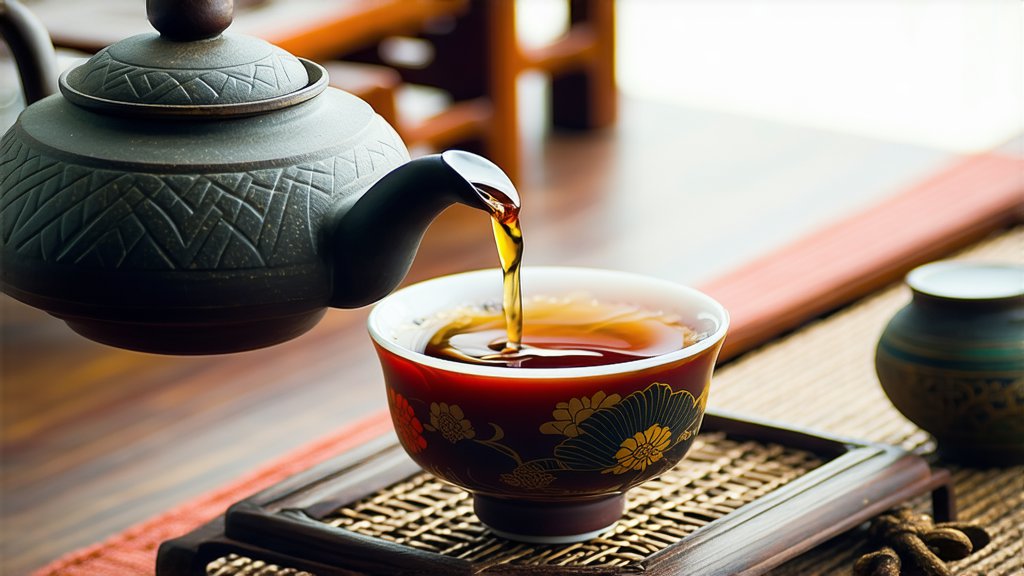
Pu-erh tea, originating from the Yunnan Province of China, stands as a testament to the country's rich tea heritage and its deep connection with the art of tea cultivation and processing. This unique variety of black tea, also known as dark tea, has garnered global recognition not only for its distinctive flavor profile but also for the myriad of health benefits it offers. In this exploration, we delve into the historical roots of Pu-erh tea, its various types, the intricate craftsmanship behind its production, and the nuanced art of tasting this revered beverage.
A Glimpse into History
The history of Pu-erh tea dates back over a thousand years, with its origins traced to the ancient tea-horse trade routes that connected Yunnan with Tibet and other regions of Asia. The name "Pu-erh" is derived from the Pu'er region in Yunnan, where this tea was traditionally processed and traded. Over centuries, Pu-erh tea evolved into two primary categories: Raw Pu-erh (Sheng) and Ripe Pu-erh (Shou), each undergoing a distinct fermentation process that imparts unique characteristics to the tea.
The Dual Faces of Pu-erh: Sheng & Shou
-
Raw Pu-erh (Sheng): This type undergoes natural fermentation over time, gradually maturing and developing complex flavors as it ages. Freshly pressed Sheng teas are known for their vibrant, astringent taste and aromatic bouquet, which mellows into a smoother, more nuanced profile with proper aging.
-
Ripe Pu-erh (Shou): In contrast, Shou Pu-erh undergoes a accelerated fermentation process known as 'wo dui', or pile-fermentation, which mimics years of natural aging in a matter of months. This results in a tea with a deep, earthy flavor, often described as woody or mushroom-like, accompanied by a rich, dark color and a thicker body.
Crafting the Perfect Cup: Production Process
The journey from leaf to cup for Pu-erh tea involves several meticulous steps:
-
Plucking: Tea leaves are handpicked during specific seasons to ensure optimal quality.
-
Withering: Freshly picked leaves are spread out to wilt under the sun, reducing moisture content.
-
Fixation: Leaves are briefly heated to halt enzyme activity, preserving their green color and fresh aroma.
-
Rolling: Leaves are rolled to release juices and form the characteristic shape of Pu-erh cakes or bricks.
-
Fermentation: For Sheng, leaves are naturally aged; for Shou, they undergo controlled microbial fermentation.
-
Drying & Compressing: Finally, the tea is dried and often compressed into cakes or bricks for long-term storage and aging.
The Art of Tasting Pu-erh Tea
Tasting Pu-erh tea is an experience that engages all senses. Here’s how to appreciate its depths fully:
-
Preparation: Use a Yixing clay teapot or a Gaiwan for brewing, as these materials enhance the tea's flavor. Rinse the leaves briefly with hot water to awaken them.
-
Observation: Examine the dry leaves and their aroma before brewing. Notice the color transformation as hot water is added.
-
Aroma: Inhale deeply after each rinse and between infusions to detect subtle changes in fragrance.
-
Taste: Sip slowly, allowing the tea to coat your palate. Note the initial taste, mid-mouth feel, and aftertaste. With each infusion, the flavor profile evolves, revealing new layers of complexity.
-
Texture & Mouthfeel: Pay attention to the tea's body—whether it feels light and aqueous or rich and velvety.
In conclusion, Pu-erh tea is not just a beverage; it's a cultural treasure that embodies the philosophy of patience, transformation, and appreciation for the finer things in life. Its enduring popularity among tea connoisseurs worldwide speaks volumes about its timeless charm and the profound impact it has had on tea culture throughout history. As you embark on your own journey exploring Pu-erh tea, remember that each cup tells a story—one that spans generations and transcends borders.